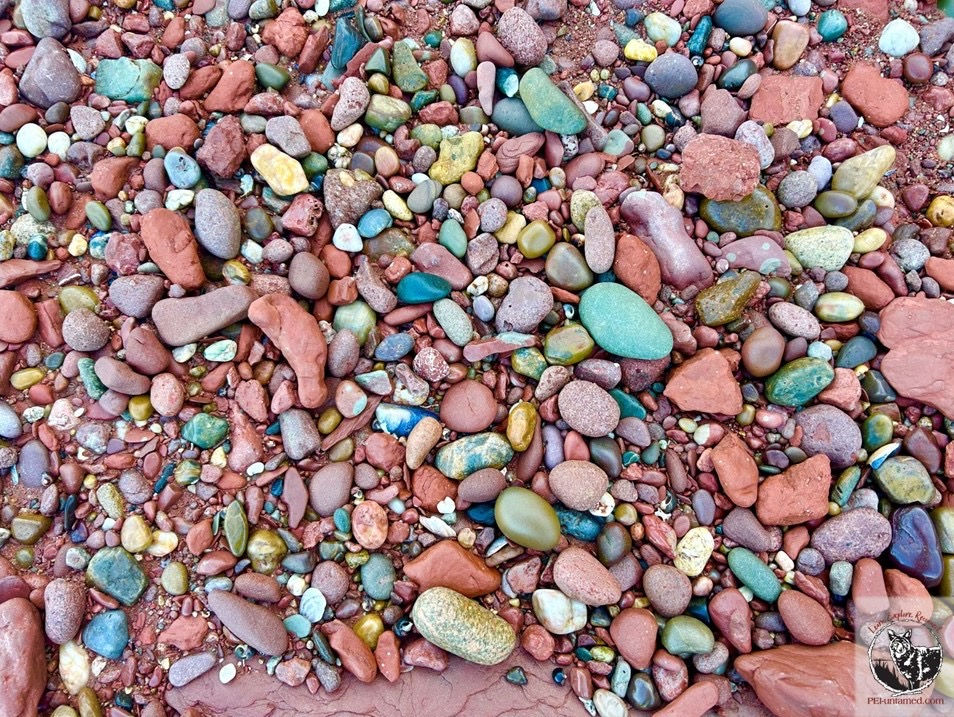Permian to Present 7: Post-glacial plants and people
- katemacquarrie22
- Jan 5, 2023
- 3 min read
So far in ‘PEI: Permian to Present’, we’ve explored the formation of the Island’s sedimentary sandstone bedrock, the fossils that can be found within it, a unique igneous outcrop in Malpeque Bay, the Wisconsin glaciation, and post-glacial evidence in our landscape. Now, let’s look at how Prince Edward Island changed since this last glaciation.
If you studied PEI history, you may have started with the first written record in 1534. But that’s like starting a book at one of the last chapters – there’s so much more before this! I describe Natural History as the story the land tells about itself. Our post-glacial story is written in ancient pollen and early Indigenous sites (Photo 1).

Fossil pollen is an essential tool in understanding historical environments. It’s distinctive – a palynologist (pollen scientist) can identify which plant or plant family a pollen grain came from. It’s durable, lasting tens of thousands of years. And it’s produced annually, so sediment cores from bogs and bays document local plants in much the same way tree rings document the history of a tree.
When glaciers left PEI about 12,500 years ago, our landscape would have looked more lunar than earthly. A thin layer of till (a combination of clay, silt, sand, gravel, and boulders) shaped by glacial meltwaters covered the bedrock. Over many centuries, algae, mosses, lichens, and plants colonized this barren till, broke it down, and added organic matter eventually creating soil.
Before about 10,000 years ago PEI was tundra-like, with grasses, sedges and alpine species dominating the pollen record. The mean temperature could have been as low as -1C, compared with about 5-6C today. This is the landscape the Island’s earliest people would have known. Archaeologists – both amateur and professional – have found stone tools including projectile points, knives, and scrapers in various locations around PEI (Photo 1). The oldest known was found along the Tryon River the 1930s by Aage Sorenson, and later dated as more than 10,000 years old (Photo 2).

Around 10,000 years ago, the climate started warming and the pollen record shows the arrival of northern tree species including spruce, birch, and willow. This would have been a more hospitable environment for Paleoindian people, with more vegetation, ample marine resources (including shellfish, walrus and seals) and large land animals such as caribou that had arrived centuries earlier.
Pine first appears in our pollen record about 8,000 years ago. Birch, willow, alder, larch, and fir were all present then, as were ferns, clubmosses, grasses, and sedges. For a few millenia, PEI was covered in boreal forest like what you’d find today in northern Quebec and Ontario.
By 4,500 years ago, we start to see hemlock as well as the arrival of some hardwoods – oak, elm, maple, ash and ironwood – pointing to a transition from boreal to temperate forest. Native asters and goldenrods start to appear, but one tree is notably absent: beech. This Acadian-forest indicator took a few more centuries to arrive, and our traditional beech-birch-maple association wasn’t established on the Island until about 4,000 years ago. There is ample evidence of Indigenous presence and culturally important sites in this temperate landscape (including shell middens, stone tools, and earthenware ceramics, among others) from locations beyond those earliest sites shown in Photo 1.
From here, the pollen record is more or less consistent until European settlement and land clearing in the 1700s. This is marked with dramatic decreases in tree pollen, and the appearance of pollen from non-native grasses (such as oats, wheat, barley, and timothy), daisies, thistles, knapweeds, and others.
In the next edition of Permian to Present, we’ll explore what PEI looked like from the time Jacques Cartier dropped by in 1534 until the arrival of the first French settlers in 1720.



